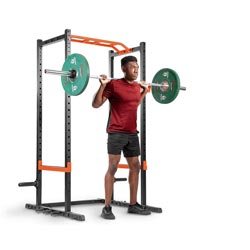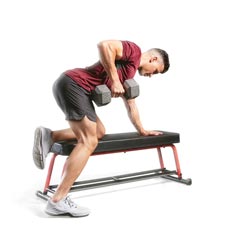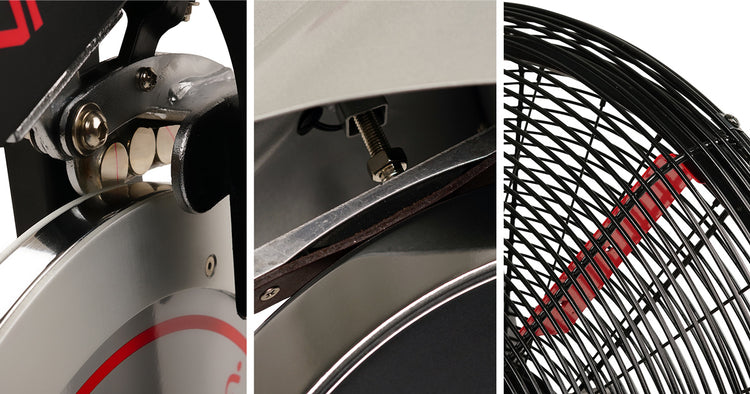When looking to purchase a cycle bike, you have a wide variety of options to choose from. One of the best factors for narrowing your selection is determining the type of resistance best for you whether that be magnetic resistance, contact resistance, or air resistance. In this article we’ll go over the specifics of each type of resistance, so you can make the best choice for you.
Magnetic Resistance
Magnetic resistance uses magnets to create tension against the flywheel. Unlike contact resistance, the magnets don’t actually make contact with the flywheel. Instead, the magnetic force applies varying degrees of resistance as the magnets gets closer or further away from the flywheel. Magnetic resistance can be adjusted either by twisting a micro-tension knob or electronically through set levels on a digital monitor.
Magnets create incredibly strong forces, meaning the resistance you’ll feel with a magnetic resistance bike is strong, although it can always be adjusted if you’re looking for an easier ride. A magnetic resistance cycle bike is sure to provide challenge throughout your fitness journey.
Due to magnets never touching the flywheel, magnetic cycle bikes are virtually silent. Along with a quiet and smooth ride, you can expect little to no maintenance. These bikes are durable, quiet, and virtually maintenance free making cycle bikes with magnetic resistance some of the most popular bikes on the market.
Contact Resistance (Felt or Leather Pad)
Contact resistance cycle bikes use either a felt or leather pad to apply pressure to the flywheel through varying degrees of contact. Contact resistance can be adjusted by twisting a micro-tension knob, levels are generally based upon the difficulty for each individual user and may vary dependent on fitness level.
The resistance you’ll feel with contact resistance is incredibly strong. If you tighten the resistance completely you should be effectively unable pedal. Due to the actual contact the felt or leather pad will inevitably have with the flywheel, there will general wear and tear to the pad itself. In general, leather pads are higher quality and more durable than felt and will need to be replaced less often.
When it comes to felt pads, you may notice it starts to get a little worn down and fuzzier, and the resistance will feel less effective - this is the time to replace a felt pad. You can increase the life of your felt pad by lubricating them regularly.
In general, both leather and felt resistance are relatively quiet. You may notice a light soft noise of the contact between the pad and flywheel. While magnetic resistance is quieter than contact resistance (simply because there is contact happening), it is by no means loud.
Air Resistance
Air bikes have a fan rather than a flywheel. While both magnetic and contact resistance cycle bikes create resistance by applying pressure to the flywheel, air bikes create resistance as the fan blades push against the air. The faster you ride, the more resistance you’ll feel.
If you’re interested in HIIT or Tabata training, air bikes are a popular choice, as they’re perfect for all-out sprints and intervals. Most air bikes have full motion handlebars, incorporating your upper body into your cardio workout for more of a full body workout.
Fan bikes aren’t typically as quiet as magnetic or contact resistance cycle bikes. However, they aren’t super loud either. They’re basically what you would expect volume-wise from a regular household fan.
Whatever your choice, you really can’t go wrong when it comes to choosing between magnetic, contact, and air resistance. It all comes down to personal preference and what will best serve your fitness goals!

























